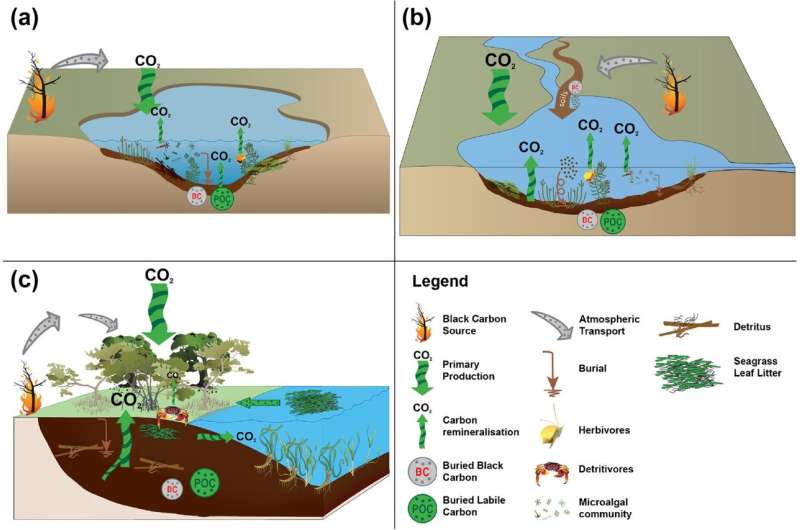Reevaluating wetland carbon sink mitigation

Researchers from University of Tasmania (UTAS), the Nanjing Institute of Geography and Limnology of the Chinese Academy of Sciences (NIGLAS) and Universiti Malaysia Sabah (UMS) have revealed that the current mitigation concepts for greenhouse gas emissions and measurements are not what they seem.
The study was published in Wetlands.
Accumulation of buried organic carbon down through the sediment column is not an accurate measure of carbon sequestration, as it is not equivalent to sequestration as net ecosystem production (NEP) for open systems.
"Stable organic carbon inputs require subtraction of intrinsically allochthonous recalcitrant and are undervalued. Carbon mitigation from wetland restoration is less than their preservation," said Zhang Ke from NIGLAS.
The sediment organic carbon accumulation down inland and coastal wetlands has always been regarded as a convenient means of measuring trends and average rates of sequestration over climatic scales.
"Wetlands, however, are open to organic inputs from catchments and adjacent water bodies. These can be labile and easily consumed or decomposed, and recalcitrant outside the carbon loop that is not consumed or decomposed," said Dr. John Barry Gallagher from UTAS.
Consequently, what is required from the sediment record is not the total organic burial, but the burial rate of what remains of the wetlands plant production from the amount of the labile organics inputs consumed, and the remains of those recalcitrants inputs, largely black or pyrogenic carbon.
To estimate this, the researchers modified a general decomposition model to hindcast the original input rate and to project what remains for all organic sources after 100 years of burial.
Based on this model, they found that carbon accumulation was on average 33.5 and 7.2 times greater than their respective sequestration rates for a mangrove and a seagrass ecosystem.
The study also reveals that sequestration relative to its non-canopy replacement or alternative stable state is not included for voluntary or compliance carbon markets, instead, only the rate of loss and gain of organic stocks for wetlands are likely disturbed or restored.
This limitation would otherwise undervalue the mitigation potential of wetland systems. However, the rate of gain in sediment stocks for a restored system is similarly constrained as a mitigation service by consumption and decomposition of those external organic inputs.
More information: John Barry Gallagher et al, A Re-evaluation of Wetland Carbon Sink Mitigation Concepts and Measurements: A Diagenetic Solution, Wetlands (2022). DOI: 10.1007/s13157-022-01539-5
Provided by Chinese Academy of Sciences





















